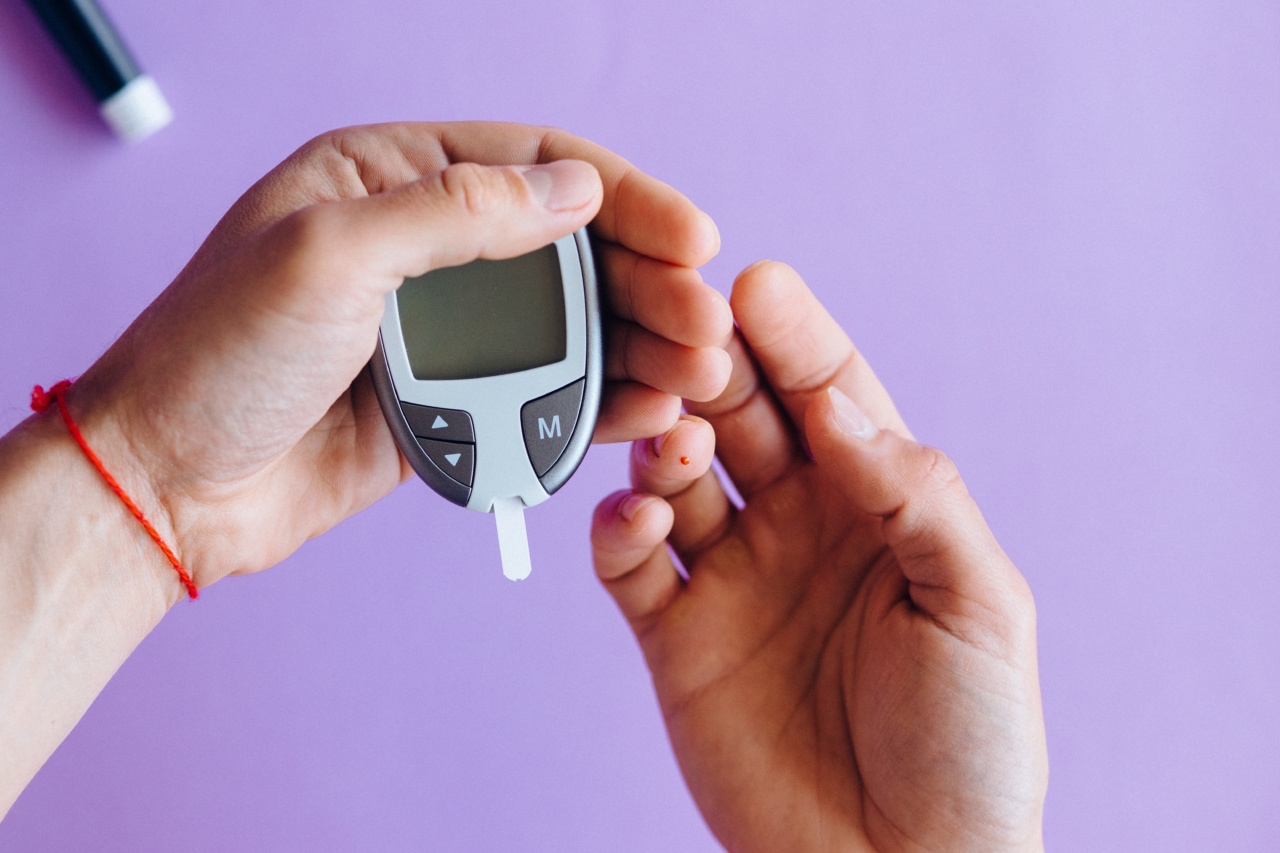Diabetes is a chronic health condition that affects millions of people all over the world. According to the World Health Organization (WHO), 1 in 11 adults have diabetes, and the number is expected to rise further in the coming years.
High blood sugar, also known as hyperglycemia, is a common symptom of diabetes which, if not managed properly, can lead to significant health complications such as heart disease, nerve damage, kidney disease, and blindness. However, by following a healthy lifestyle and making some dietary changes, people with diabetes can manage their blood sugar levels effectively.
In this article, we will discuss four effective ways to control your blood sugar levels and lead a healthy life.
1. Monitor Your Carbohydrate Intake
Carbohydrates are one of the main sources of energy in our diet. Carbohydrates are broken down into glucose in the body, which is then used for energy.
However, people with diabetes should be careful about the amount and type of carbohydrates they consume as it can have a significant impact on their blood sugar levels.
You should try to consume complex carbohydrates that are high in fiber, such as whole-grain bread, brown rice, oatmeal, fruits, vegetables, and legumes. These types of carbohydrates take longer to digest and have a gentler effect on blood sugar levels.
Simple carbohydrates, such as white bread, pasta, sugar, and sweets, should be avoided as they cause a rapid spike in blood sugar levels.
It is also important to monitor the portion sizes of carbohydrates you consume. You can use a food scale or measuring cups to ensure that you are eating the right amount.
Additionally, it is helpful to spread your carbohydrate intake throughout the day and avoid consuming large amounts in one sitting.
2. Get Plenty of Physical Activity
Physical activity is crucial for people with diabetes to manage their blood sugar levels. Exercise helps to improve insulin sensitivity, which helps the body to use the available insulin more effectively.
Regular physical activity also helps to maintain a healthy weight, reduce stress levels, and improve overall health.
You should aim for at least 150 minutes of moderate-intensity exercise per week or 75 minutes of vigorous-intensity exercise per week.
Some examples of physical activities that can help to control blood sugar levels include brisk walking, cycling, swimming, dancing, and strength training.
Before starting any exercise program, it is important to speak with your healthcare provider to ensure that the activity is safe for you.
Additionally, you should monitor your blood sugar levels during and after exercise to make sure that they remain within the target range.
3. Choose Healthy Fats
Fats are important in our diet as they provide energy, support cell growth, and protect our organs. However, not all fats are created equal.
People with diabetes should choose healthy sources of fats that are low in saturated and trans-fats, which can increase the risk of heart disease.
You should aim to consume unsaturated fats, such as omega-3 fatty acids, which are found in fatty fish, nuts, seeds, and vegetable oils. These fats can help to lower LDL cholesterol levels, which is important for maintaining heart health.
Avoid consuming foods that are high in saturated and trans-fats, such as fatty cuts of meat, fried foods, pastries, and desserts. These fats can raise LDL cholesterol levels and increase the risk of heart disease.
4. Stay Hydrated
Drinking enough water is important for everyone’s overall health, but it is particularly important for people with diabetes.
When blood sugar levels are high, the body tries to flush out the excess sugar through urine, which can lead to dehydration.
You should aim to drink at least 8 glasses of water per day, or more if you are physically active. Additionally, you should avoid sugary drinks, such as soda and fruit juice, as they can cause a rapid increase in blood sugar levels.
It is important to monitor your blood sugar levels regularly and make the necessary changes to your diet and lifestyle to keep them within the target range.
By following the tips above and working closely with your healthcare provider, you can manage your blood sugar levels effectively and lead a healthy life with diabetes.






























